Discover Ephesus and Top Destinations in Western Turkey with an expert tour guide and a TripAdvisor Winner for 13 consecutive years.
Ephesus Tour DiscountsEphesus is a world-famous historical attraction. Ancient City of Ephesus on the shores of the Aegean Sea is one of the most popular travel destinations of Turkey, welcomes millions of visitors every year. Ephesus houses a large number of Christian heritage sites. Discover exciting shore excursions, day trips to Ephesus and Ephesus Walking Tour. High value tours. Browse our collection of Ephesus private tours. We are offering %20 discounts for Private Ephesus Tours with English speaking tour guides and Private Ephesus Tour Guide Services with English-speaking tour guides at the following dates: For more information please do not hesitate to contact us. Book early and save more! * There is no deposit payment required for the private tour and tour guide bookings. * Pay during the tour. * For cruise passengers, there is no cancellation fee if your ship does not call to the port for any reason.

32 Comments
Private Ephesus Tours from Selcuk Hotels and Selcuk Train Station
Embarking on an Ephesus tour from Selcuk is truly an adventure that will transport you back in time and unveil the extraordinary history of this ancient city. Ephesus, undeniably a must-visit destination, enchants its visitors with its impressive archaeological monuments and captivating stories of the past. As you wander through the remains of what was once the capital of the Asia province in the Roman Empire, a knowledgeable Ephesus tour guide will be your trusty companion, weaving together fascinating stories and providing insightful information about this remarkable place. Brace yourself to be spellbound by the captivating tales and hidden gems that Ephesus has to offer, leaving you with memories that will last a lifetime. The friendly tone and warmth of your tour guide will make this journey an experience filled with both education and entertainment, making your exploration of the ancient city all the more memorable.
During our Ephesus Tours from Selcuk, our guests tour among the well-preserved ruins. They visit this ancient metropolis that was once full of theatres, agoras, shops, wide marble streets and temples. They marvel at the world-famous Library of Celsus, an architectural masterpiece that still impress visitors today.
Selcuk is the nearest town to the ancient city of Ephesus. Selcuk is the modern name of Ephesus. A small agricultural town, having a population of 35000 people. Due to the proximity to the ancient city of Ephesus, some travelers prefer to stay in Selcuk town. Selcuk has many small hotels. For travelers who will stay overnight in Selcuk town, we recommend visiting the farmers market on Saturdays. Ephesus Ancient City is the highlight of the area. Ephesus is an incredible place and worth visiting, an Ancient Greco-Roman city. A person can easily spend half a day here just wandering around the ancient streets. Ephesus is a remarkably preserved UNESCO world heritage site. Izmir to Selcuk and Izmir Airport to Selcuk is accessible by trains. There are trains from Izmir or Denizli (Pamukkale). Modern trains are operating between İzmir – Izmir Airport – Selcuk – Denizli. It is a comfortable and cheap way to travel on this route. Train Izmir to Selcuk takes approximately 1 hour 20 minutes. For more information about the trains schedules to Selcuk, please visit the following link: Izmir, Izmir Airport - Selcuk Town (Ephesus) Train Schedules How do you get from Selcuk to Ephesus? Ephesus is 4 km walking distance from Selcuk. It takes approximately 30 minutes to walk from Selcuk to Ephesus Ancient City. We recommend entering from the North gate and exit from the south gate. Walking back would be tough therefore the best is to take a taxi back to Selcuk town. For the travelers who are interested we offer private Selcuk Ephesus Walking Tours. Can I tour Ephesus on my own? Yes, you can tour Ephesus on your own. Kindly note that there is very little information in Ephesus describing what you are looking at. If you want to know more about what you see, you really need a tour guide or an audio guide. Is Selcuk worth visiting? Selcuk is one of the most beautiful, perhaps world-renowned towns of Izmir. Of course, the fact that it is home to the Ancient City of Ephesus has a big share in this. But not only that, Selcuk is the place to visit and its beauties. Many historical attractions nearby can be visited in day tours from Selcuk,
We also offer special interest tours to maximize your experience in Ephesus:
Recommended hotels to stay in Selcuk (booking.com links) :
For travelers who stay in Selcuk town or travel to Selcuk by train, we offer private airport transfers from Izmir airport and private Ephesus tours and private Selcuk Ephesus walking tours. For travelers who travel with rent a car, we also provide tour guide only services where our tour guide meets you in your hotel in Selcuk or in front of Basilica of St. John or Selcuk Bus Station or Selcuk Train Station.
For Ephesus tour guide only services, please visit: Ephesus Tour Guide Only On certain dates we offer %20 discount. To see these dates please visit: Discounted Ephesus Tours * If you do not have a rental car and staying in Selcuk or coming to Selcuk with train. We offer private walking tours of Ephesus, including visits to Basilica of St. John, Temple of Artemis and Ancient City of Ephesus. For more information, please visit Ephesus Walking Tours and contact us. Suggested Ephesus Day Trips from Selcuk are as follows: SELCUK - No:1 Half-Day Ephesus Tour from Selcuk (4 hours) Temple of Artemis, Ephesus Ancient City, Ephesus Experience Museum After meeting your Ephesus local guide, drive through the fertile lands. Your first stop will be the Temple of Artemis, one of the 7 wonders of the ancient world. Afterwards drive to the ancientcity of Ephesus. You will be dropped at the upper gate of Ephesus with your tour guide. Start your Ephesus Walking Tour exploring the ruins. You will be walking down the hill approximately 2 hours. You will see the Odeon, the basilica, Domitian square, fountain of Trajan, Celcus library, Terrace Houses (optional), Marble street, the Grand Theater of Ephesus and Harbor Street. Step into the rich history of Ephesus by indulging in an 18-minute audio show at the Ephesus Experience Museum, where you can immerse yourself in the intriguing tales of this ancient city. You will be ending your tour at the bottom gate. Your tour guide will take you to another site or drop you at the desired location. SELCUK - No:2 Full day Ephesus Tour from Selcuk - Christian Ephesus (6 hours) Meet with your tour guide at your hotel in Selcuk. Embark on a captivating journey through historical riches. Begin your tour with the Basilica of St. John. See earlier settlement locations of Ephesus, the remains of Temple of Artemis and the tomb of John the Apostle. Drive to the Ancient City of Ephesus. Meander through the Agoras, Curetes Street, the remarkable Celsus Library, and the monumental Great Theater where a riot took place against St. Paul in 56AD. Immerse yourself at the Ephesus Experience Museum with an audio visual show of 18 minutes. The next destination on your itinerary will take you to the house where Mother Mary is traditionally believed to have spent her final years. This site holds significant spiritual importance, especially for devoted Catholics who revere Mother Mary as a central figure in their faith. Enjoy a traditional Turkish lunch in the serene surroundings of a charming country house, enhancing your cultural experience. Subsequently, at the same location, you will have the opportunity to witness the skills of local artisans as they demonstrate various local handicrafts, providing insight into the region's rich heritage and traditions. SELCUK - No:3 Day Tour from Selcuk Ephesus and Sirince Village (7 hours) Meet with your guide in Selcuk. Drive to one of the 7 wonders of the ancient world: Temple of Artemis. After seeing the Templeof Artemis drive to the magnificent ancient site of Ephesus. Ephesus is the best preserved of the Greek/Roman cities in Anatolia and while you are visiting the ancient ruins of this magnificent site, your tour guide will bring them alive. You will see the beautiful Celsus Library, restored and reconstructed according to its original form by the architect Friedmund Hueber in the 1970's. The most spectacular building of Ephesus is the Grand Theater, built during the Hellenistic age to hold 25,000 spectators. It is there that St. Paul preached. Opposite the Temple of Hadrian are the Terrace Houses, homes of Ephesus' wealthy citizens. The city was also the hometown of great philosopher Heraclitus. After a visit to Ephesus Antique Site, you will arrive at Sirince Village. This old Orthodox Village, 10 km from Selcuk, was once "Cirkince"(ugly). Indeed its inhabitants gave this name on the purpose as they did not want to be bothered by foreigners nor to share the beauty of their village. Still after years, visitors understood that the village was not ugly and called it "Sirince" (pretty). Today the village is a perfect synthesis of Turkish-Greek culture as of the 1920's; after the Turkish Independence War, people exchange between Greek and Turks has occurred and all those typical Greek houses, though they kept their original outside characteristics, have received the local layout inside. At Sirince Village you will have a chance to see the local life at a village and purchase some small local souvenirs and handicrafts. The village is also famous for its local grape and other fruit wines. For more information and private Ephesus tour costs and availability please contact us.
Train travel to Ephesus (Selcuk)
* For travellers who will be staying at hotels in Basmane district in Izmir, we recommend them to take the 7.10am train from Basmane train station which will arrive to Selcuk at 8.34am. Our tour guide and vehicle can meet you at Selcuk train startion. After the tour you will be dropped back to Selcuk train station for your return journey. Return train will leave Selcuk at 4.04pm and arrive Izmir Basmane Train station at 5.30pm. Fortrain schedule between Izmir and Selcuk, please visit: Izmir, Izmir Airport - Selcuk Town (Ephesus) Train Schedules Private Full Day Biblical Ephesus Tours with Expert Local Tour GuidesJoin us on an extraordinary Ephesus Biblical Tour. Our expert Ephesus guide will guide you through the Biblical Significance of Ephesus. Ephesus is among the main biblical sites in Turkey. Explore the well-preserved Theater where the uprising against the Apostle Paul began, and pray in the House of Virgin Mary. Our Biblical Ephesus Tour offers an adventure that will touch your heart and soul. We also offer Biblical Ephesus Tours from Cruise Ships at Kusadasi Cruise Port. If you are looking for a tour that combines ancient history with biblical significance, the Ephesus Biblical Tour is for you! This fascinating tour will take you to the places that are mentioned in Chapter 19 of the Book of Acts. From the stunning Temple of Artemis to the impressive Grand Theater of Ephesus, you will walk in the footsteps of St. Paul, St. John and Virgin Mary. You will witness the rich religious and cultural heritage that Ephesus offers. An expert Ephesus guide will inform you with fascinating stories, bring scripture to life, and provide context to the biblical narrative. So, get ready for a journey of discovery and enlightenment as you embark on this unforgettable tour of Biblical Ephesus! What happened in Ephesus in the Bible? Ephesus was an important city in the early Christian period. Ephesus is located in modern-day Turkey. It was a wealthy commercial city and was famous for its Temple of Artemis. The city was the capital of the Asia Province of the Roman Empire and a center of trade and worship that attracted many people from different cultures and faiths. Ephesus is mentioned in the Chapter 19 of the Book of Acts. St. Paul spent 2.5 years establishing a Christian community in Ephesus. But Paul's teachings about Christ concerned the merchants in the Temple of Artemis. In 56 AD, a riot was started in the Ephesus Grand Theater by local silversmith Demetrius. For the faithful travelers who are interested to know the biblical history of Ephesus, we offer private Full Day Biblical Ephesus Tours with expert local tour guides. Ephesus has a major importance in biblical history. Numerous names mentioned in the New Testament lived in Ephesus such as: St. Paul, St. John, Timothy, Epaphras, Demetrius the silversmith, possibly Virgin Mary... and many more. During the tour you will be taken to the Biblical Highlights of the area such as Ancient City of Ephesus, The Grand Theater of Ephesus, Basilica of St. John, Temple of Artemis, Church of Mary in Ephesus ... We offer Private Full Day Biblical Ephesus Tours from Full Day Biblical Tour Itinerary:After reaching Selcuk. Embark on a captivating journey through the Biblical Ephesus Tour starting at the Basilica of St. John with your expert tour guide. Discover the intriguing remnants of the church constructed on the tomb of John the Apostle, offering a profound insight into the historical and religious significance of the site. As you gaze upon the scenic hill, behold the ancient remains of the Temple of Artemis and the early settlement locations of Ephesus, providing a unique perspective on the rich history and cultural heritage preserved in this remarkable destination. Immerse yourself in the depths of history as you uncover the secrets hidden within these ancient sites, making your tour an enlightening and memorable experience. Afterwards, you will continue on to visit ancient city of Ephesus, one of the most magnificent and best-preserved ancient sites in the world. See the Odeon, the Market Basilica, Curetes Street, Bath, Celsus Library, Marble Street and visit the Great Theater of Ephesus where a mentioned in Acts Chapter 19 where a riot started against St. Paul by the merchants of Ephesus. The Grand Theater of Ephesus had a seating capacity of 25,000 people. Stop at Ephesus Experience Museum that offers an enriching 18-minute audiovisual show that allows visitors to immerse themselves in the historical beauty of Ephesus. This experience provides a captivating glimpse into what the ancient city once looked like, bringing its rich history and grandeur to life through a combination of visuals and sounds. The final destination on the tour is the the house where Mother Mary is traditionally believed to have spent her final years. This site holds significant spiritual importance, especially for devoted Catholics who revere Mother Mary as a central figure in their faith. Experience the richness of Turkish culture by savoring a traditional lunch amidst the serene surroundings of a country house. Following lunch, immerse yourself with local handicrafts, witnessing skilled artisans crafting intricate pieces that showcase the beauty and artistry of Turkish tradition. 2 Days Pamukkale and Ephesus Private Tour from IzmirExplore three of Turkey’s highlights which are listed in the UNESCO world heritage list. 2 Days Private Tour from Izmir. First day, depart for Ephesus to explore the Greco-Roman ruins. Overnight in Pamukkale. On the second day visit Pamukkale (Hierapolis) and Laodicea. Pamukkale is known with the white travertine terraces and pools that are formed by calcium carbonate. Walk on the terraces and visit the ruins of ancient city of Hierapolis. Includes excellent English speaking tour guide, lunches, luxury transport, 2 Day Tour Ephesus Pamukkale from IzmirTour program and private tour cost are as follows: Day 1 - Private Tour of Ephesus starting from Izmir and ending in Pamukkale. Meet your licensed tour guide and air-conditioned vehicle at your hotel in Izmir or Izmir Airport. Depart for Selcuk, Drive approximately 1 hour. Your first stop will be the Temple of Artemis, one of the Seven Wonders of the Ancient World. Continue to the ancient city of Ephesus which was the home to over 200,000 people in the Roman Times. The peak time of the city was between the 1st and 2nd century AD. Modern-day excavations have revealed an incredible collection of ruins. Visit the highlights of the ancient city and visit the Ephesus Experience Museum. Enjoy a traditional Turkish lunch at the grounds of a country house. After lunch see the local artisans showcasing their traditional handicrafts. Afterwards, drive to Pamukkale. Overnight in Pamukkale. Day 2 - Private Tour of Pamukkale and Laodicea starting from Pamukkale and ending at Izmir Airport After breakfast, Drive to Pamukkale, a natural and historical site listed as UNESCO World Heritage site. Enjoy Pamukkale’s white travertine terraces, formed by natural hot springs that has high calcium carbonate. Visit the ruins of ancient city of Hierapolis. After lunch at a local restaurant, a visit to Laodicea is a fascinating glimpse into the ancient city that held significance during the Roman Empire. Referred to as the Luke Warm city in the Book of Revelation, Laodicea's historical importance is undeniable. Noteworthy figures like Emperor Hadrian, who chose the city for a summer retreat, and the renowned Roman statesman Cicero, who served as governor, have left their mark on its legacy. Exploring the ruins and landmarks of Laodicea provides a unique opportunity to connect with the rich history and culture of this once-thriving Roman metropolis. Afterwards we will transfer you to Izmir Airport. Private Tour Cost: 550 Euro (Total to be paid for a group 1-6 people) Rates Cover:
Rates Do Not Cover:
There is no prepayment required for the reservation. To avoid disappointment, we recommend to make your private tour reservation at earliest possible. Payment Terms: Payment can be made in Euro, Turkish Liras or US Dollar cash at the end of the tour. There is no prepayment required for the booking. * If requested we can pick you or drop you to Izmir airport. There is no surcharge for these services. * If requested guests can be transported to Denizli Cardak Airport at the end of Day 2. There is a surcharge of 50 Euros for this private transfer service. Cancellation Policy You can cancel a tour 72 hours in advance of your tour departure without any charges. If you would like to cancel a tour, simply send us an email and we will be happy to assist you. Once you are within the 24 hour tour departure window, the tour becomes non-refundable. This is because our guide and vehicle have set aside space to accommodate your request and will often not be able to fill that space with another customer so close to departure. For more information, contact us. Frequently Asked Questions :Q1 - I understand that we would be responsible for our overnight accommodation in Pamukkale. > We do not make hotel bookings. You make your hotel booking directly. We recommend the following hotels: (booking.com links) Q2 - How long will we have free for swimming in Pamukkale? > You will have approximately one hour for swimming in Pamukkale antique pool. Q3 - We would anticipate being dropped off at the Izmir Airport for our flight. > In the second day you will be dropped off to Izmir airport approximately at 7.00pm. Q4 - So we would be safe booking a flight departing Izmir at 10:00 PM if we are expected to arrive at 7:30PM? The guide will ensure we stay on schedule? > Yes, no problem. Q6 - How do we book our trip with you? How does payment work? > For the booking, all we need is both of your names and the pick up address. Payment can be made in Euros, Turkish Liras, British Pounds and US Dollars cash at the end of the tour. There is no prepayment required for the booking. 7 Churches of Revelation Tour visiting Biblical sites in Western Turkey. 7 Churches Tour from Izmir
Smyrna (Izmir) - Pergamon (Bergama) - Laodicea -
Ephesus - Sardis - Philadephia - Thyatira - Hierapolis (Pamukkale)
We offer private 7 Churches Tours in Turkey visiting the 7 Churches of Revelation,
Seven Churches of Revelation Tour with expert tour guides. There are many biblical sites in Turkey. For many generations Christians, or those who simply have an interest in Christian history and traditions, have traveled to the western part of Turkey which was known as Asia Minor in the biblical times, The Asia Minor is known for the 7 churches of the Book of Revelation. On top of that St. Paul travelled to the area several times. Near Ephesus, there is a possible house where Virgin Mary spent her last years. Ephesus and the surrounding areas had a history of spiritual awakening and Christian revival. When did John wrote the Book of Revelation?
Apostle John, one of the important figures of early Christianity, faced exile from Asia Minor to Patmos in 95 AD during the reign of Roman Emperor Domitianus. This event had a significant impact on the world of faith, providing the ideal environment for the writing of the Book of Revelation. Around 96 AD, while living on the Island of Patmos, located approximately 50 nautical miles southwest of Ephesus and 33 nautical miles west of Miletus. The exile of the Apostle John to Patmos and the subsequent writing of the Book of Revelation stands as a pivotal moment in Christian history, demonstrating the power of faith even in the face of difficulties.
What are the names of 7 Churches of Revelations today?
The Seven Churches of Revelation are ancient churches that St. John wrote about in the book of Revelation of the New Testament. All the 7 churches mentioned are located at the western part of Turkey. Biblical sites in Western Turkey:
Can you visit the 7 churches of Revelation?
Absolutely! Visiting the seven churches mentioned in the Book of Revelation is an exciting and meaningful journey. Exploring these historic sites can give you a unique insight into the early Christian period and deepen your understanding of the messages conveyed in the biblical text. So if you are passionate about biblical history, visiting the Seven Churches of Revelation can be a captivating and enriching experience.
Where did Apostle John die?
It is said that the Apostle John, one of the important figures in the history of Christianity, lived a long life and eventually died of natural causes in Ephesus around 98 AD during the reign of Roman Emperor Trajan. Remarkably, he was the only apostle who was not martyred, while the remaining eleven faced persecution and lost their lives for their faith. Four centuries after the burial, Byzantine Emperor Justinian sought to honor the memory of the Apostle John by ordering the construction of a large church over his burial site in Ephesus. This magnificent structure, known as the Basilica of St. John, still stands today in Selcuk, a charming town in western Turkey. Built to commemorate the apostle's life and teachings, the basilica is a testament to the enduring legacy of John the Apostle and his significant contributions to the spread of Christianity.
Walking in the footsteps of Saint John
We have a background in sharing the Western Part of Turkey's Christian Heritage with others, having worked with a broad selection of churches and mission organisations over the years. We are always pleased to organise Biblical Tours of Western Turkey, visiting seven churches of revelation and beyond. We are sure that you will find them interesting whether you are a Christian or religious person or simply interested.
Our 3-Day Tour of 7 Churches offers a unique opportunity to discover the historical and religious significance of the seven churches mentioned in the book of Revelation. Besides these precious places, we also added a visit to Hierapolis, especially the place where the Apostle Philip was martyred. Also, get ready for a fascinating experience on the surreal white calcium carbonate terraces of Pamukkale. This tour promises to leave you with a deeper understanding of these biblical landmarks and a deep sense of connection to history. Depending on how long you area able to tour for. A one day Biblical Ephesus Tour can take you to many sights of Christian interest in Ephesus. If you have 2 or more days there are many more possibilities such as a tour incorporating ancient cities of Pergamon, Laodicea, Hierapolis (Pamukkale) etc. Get in touch for more details. 1We are happy to offer two different 7 Churches Tour options depending on your preferred travel time. Option No. 1, which operates between April and October, allows you to enjoy the beauties and favorable weather of Turkey in these months, allowing you to explore historical churches in pleasant conditions. On the other hand, Option No. 2, which operates between November and March, provides a unique perspective as you witness the tranquility of the winter months and delve into the rich Christian Heritage of Asia Minor. Whatever option you choose, our professional team is expertly trained to provide you with an extraordinary and immersive journey, offering insightful guidance and ensuring your comfort throughout the tour. We look forward to creating an unforgettable experience for you when you embark on this spiritual journey in Turkey. Below please find suggested 3 Days Seven Churches Tour Turkey itineraries:
7 Churches Tour Turkey Price: 950 Euro (Total to be paid for the group of 1-5 people)
* Above rate is NOT a per person rate. It is total to be paid for your group. The price includes:
The price does not include:
Payment Terms Private Tour Payments can be made in Euros, Turkish Liras, British Pounds and US Dollars cash at the end of the tour. There is no prepayment required for the booking. We only accept cash payments. Entrance fees can be paid with credit cards. * We recommend the guests to obltain Museum Pass Turkey or Museum Pass Aegean. This would be a more economical option for the costs of entry to the sites. For more information and availability, we kindly request that you reach out to us. At your convenience, please don't hesitate to contact our team, as we are more than eager to assist you. Rest assured that our dedicated staff is ready to provide you with comprehensive details and guide you through the process. We value your interest and look forward to the opportunity to serve you. Recommended hotels to stay during your 7 Churches Tour Turkey: (booking.com links)
Private Ephesus Tours from Alacati and Cesme
Private Ephesus Tours from Alacati, Cesme Hotels and Cesme Cruise Port with licensed tour guides.
Alacati gained great importance in history because of its secure port. Alacati Port is one of the safest ports in the south of Cesme Peninsula. The history of Alacati dates back to 3000BC. Alacatı started to develop at the beginning of 1800's. At the beginning of the 1800s, the phylloxera disease hit the vineyards in Europe and made all the vineyards inefficient. Alacati benefited from this. After 1830, disease-free, quality grapes and wines, which grow on fertile soil of the region, are opened to the world from Alacati Port. The most important factor in the development of the economy of Alacati at that time was wine production and olive oil production.
Ephesus Day Trip from Alacati and Cesme
Ephesus is the highlight of Western Region of Turkey. It is a must see site for all travellers visiting Alacati. We offer private tours of Ephesus for travellers who stay in Alacati, Cesme Hotels and cruise ship passengers calling to Cesme Cruise Port. These private tours can start from Alacati or Cesme and end inIzmir Airport or start from Izmir airport and end in Alacati/Cesme or start and end in Alacati. Kindly note that Ephesus is 2 hours drive from Alacati/Cesme.
Private Tour of Ephesus starting from Alacati or Cesme ending in Izmir Airport or your hotel in Alacati or Cesme or Cesme Cruise Port.
Temple of Artemis, Ephesus, Ephesus Experience Museum (8 hours)
After meeting your driver, start your journey from Cesme or Alacati to Ephesus. Drive through the fertile lands. After 2 hours drive, meet your Ephesus private guide in Selcuk. Your first stop will be the Temple of Artemis, one of the 7 wonders of the ancient world. Drive to ancient city of Ephesus. You will be dropped at the upper gate of Ephesus with your tour guide. Start your Ephesus walking tour. You will be walking down the hill approximately 1.5hrs. You will see the Odeon, the basilica, domitian square, fountain of Trajan, Celcus library, Terrace Houses (optional), Marble street, the Grand Theater of Ephesus and the Harbour Street. Before departing Ephesus, witness an 18-minute audiovisual show at the Ephesus Experience Museum. This captivating exhibit provides a unique opportunity to delve into the rich history and cultural heritage of Ephesus through a dynamic blend of audio and visual presentations. Experience the richness of Turkish culture by savoring a traditional lunch amidst the serene surroundings of a country house. Following lunch, immerse yourself with local handicrafts, witnessing skilled artisans crafting intricate pieces that showcase the beauty and artistry of Turkish tradition. Your driver and tour guide will take you toIzmir Airport or your hotel in Alacati or Cesme at the end of the tour.
* %20 discount is offered on certain dates. Click the following link to check out the discounted dates: Discounted tour dates for Private Ephesus Tours
Rates Cover:
- Services of an excellent English speaking tour guide - A/C MPV. - All transportation costs. - Tax, service charges - Traditional Turkish Lunch - Pick up and drop off as indicated. - Parking fees to the sites. Rates Do Not Cover: - Entrance fees to the sites. - Drinks during lunch
Important Notice:
There is no prepayment required for the reservation. To avoid disappointment, we recommend to make your private Ephesus tour reservation at earliest possible. Payment Terms: Payment can be made in Euro, Turkish Liras or US Dollar cash at the end of the tour. There is no prepayment required for the booking. Admission Fees / Entry Ticket Costs for Ephesus and the nearby AttractionsWhen planning your visit to Ephesus, it is important to know ticket prices and opening hours to get the most out of your experience. Ticket prices are reasonably priced to reflect the historical importance and conservation efforts of Ephesus. As for opening hours, the site opens early in the morning, allowing you to explore the ruins when crowds are still minimal. What is the entrance fee for Ephesus? Revised entry ticket costs (Admission fees) for Ephesus and nearby attractions are as follows: Approximate cost of entrance fees:
* Credit Cards amd Turkish Liras are accepted for entrance fees. Euro cash is not accepted. * There is no admission fee for children under 8 years old. For the proof of age, please bring passport copies with you. * If you are going to visit other sites besides Ephesus in Western Turkey. There is a Museum Pass which provides multi visits to many sites without waiting in lines and you can make great savings. Valid for Ancient city of Ephesus, Basilica of St. John, Terrace Houses in Ephesus, Archaelogical Museum of Ephesus, Ancient city of Aphrodisias, Temple of Didyma, Ancient city of Smyrna, Ancient City of Miletus, Ancient City of Priene, Ancient City of Sardis, Ancient City of Pergamon, Asklepion of Pergamon and many others. For more information visit the following link: Museum Pass the Aegean - Multi visit pass for West Turkey For Private Ephesus Tour Costs, please visit: Ephesus Private Tour Rates 2024 entrance fee and opening hours for House of Virgin Mary in Ephesus, TurkeyThe House of the Virgin Mary is located 9 kilometers from Selcuk on Mount Bülbül. It is believed that 4 or 6 years after Jesus' crucifixion, St. John brought Virgin Mary to Ephesus. In 1891 the Lazarist priests discovered that this is the house where Virgin Mary spent her last days, after the dream of the German nun Katherina Emerich. This cross and dome-shaped structure was later restored. After the visit of Pope Paul VI in 1967 to the house, the site is considered sacred by Christians and Muslims. Every year on August 15th. The Assumption ceremonies are held on this day and attract many devoted visitors. 2024 entrance fee for House of Virgin Mary is 500 Turkish Liras per person. 500 Turkish Liras is approximately 14.5 Euros. Credit Card (Visa and Mastercard payments are accepted. ) Opening Hours for House of Virgin Mary: November-February: 08.00-17.00 March-October: 08.00-18.00 Holy Mass is held every day, from Monday to Saturday at 5:15 pm (November to March) and 6:15 pm (April to October). The Sunday Mass is held at 10:30 am (in English). We provide private tours of House of Virgin Mary and Ephesus. For more information please visit the following link: Private Tours of Ephesus or contact us How much does it cost to go to Ephesus?
Efes Antik Kenti ve Çevresi Tur Rehberi Hizmetleri
Efes Antik Kenti ve çevresinde, yerli ve yabancı konuklara tur rehberi hizmetleri vermekteyiz. Hizmetlerimiz Kültür ve Turizm Bakanlığı tarafından kokartlı profesyonel turist rehberleri tarafından sağlanmaktadır. Türkçe ve İngilizce dillerini son derece iyi konuşan tecrübeli rehberlerimiz sizlerin ve misafirlerinizin memnuniyeti için hep yanınızda olacaktır. Tur sırasında tarihsel bilgilerin dişinda rehberlerimiz, Efes Antik Kenti ve çevre bölgenin yaşam kültürünü, geleneklerini, sosyolojik yapısını, politikası konusunda da bilgi verecektir.
Efes Antik Kenti, Türkiye'nin en iyi kazılmış ve en büyük arkeolojik parkıdır. 2015 yılından beri UNESCO dünya mirası listesinde yer almaktadır. İzmir şehir merkezine 65 km uzaklıkta bulunan Selçuk ilçesi sınırları içerisinde yer almaktadır. Kuşadası'na 18 km uzaklıktadır. Kleopatra, Mark Anthony, Augustus, Aziz Pavlus, Meryem Ana ve Havari Yuhanna gibi birçok önemli isme ev sahipliği yapan efsanevi bir şehirdir. 200,000 kişilik nufusuyla, Roma İmparatorluğu'nun zirvesindeki en büyük dört şehirden biri olmuştur. Her yıl 2 milyondan fazla kişi tarafından ziyaret edilmektedir. Türkiye'nin en önemli seyahat destinasyonlarından biridir. Gezginler için mutlaka görülmesi gereken bir yerdir. Bu kadar önemli bir arkeolojik şehri profesyonel bir tur rehberi eşliğinde gezmenizi tavsiye ederiz.
Efes Antik Kenti Tarihi
Efes'in kuruluşu MÖ 6000 olan Neolotik döneme dayanmaktadır. Arkeologlar, bugün Artemis Tapınağı'nın bulunduğu Hitit Dönemi'nde yerleşim olduğunu ortaya çıkardılar. Şehir, Arzawa Krallığı'nın başkenti olan Apasas olarak adlandırıldı.
Bazı kaynaklar şehrin Amazonlar tarafından MÖ 3. binyılda kurulduğunu söylüyor. Bu küçük yerleşim yerinin sakinleri Amazonlar, Karyalılar, Leleglerdi. Amazonlar, Anadolu'da yaşayan bir kadın savaşçı ırkıydı. Homeros'un İlyada ve Odyseey destanlarında Amozonlardan bahsettiğini görüyoruz. Odyssey Destanı'na göre, Amazonlar Truva Savaşı'nda Truva atları ile Miken ve Spartalılara karşı savaştı. O sırada kraliçeleri, son Troy filminde Brad Pitt olan Aka kahramanı Achilles tarafından öldürüldü. Efsaneye göre Amazonlar, erkekleri sevmeyen, ancak doğurganlık nedenleriyle erkekleri kullanan kadın savaşçılardı. Ok atma konusunda çok iyiydiler ve daha hizli ok atabilmek için, sağ göğüslerini keserlerdi. Kaynaklar, "Ephesos" un Apasas adlı başarılı bir Amazon kraliçesinin adından geldiğini söyler. Bilindiği gibi bugün Güney Amerika'da Amazon nehri var. 16. yüzyılda bir İspanyol Asker, Homeros Destanlarında bahsedilenlere benzer şekilde yağmur ormanları arasında nehir kenarında benzer kadın savaşçıları görünce onlara Amazon ismini verir. MÖ 11. yüzyılda, Kuzey Makedonya'dan gelen Dor işgalcileri, Yunanistan anakarasına göç ettiler ve göç etmek için sakinleri kovdular. Azınlıklar arasında İyonyalılar, Aiolyalılar ve bazı Dorlar Batı Anadolu'ya göç etti. Aiolialılar, Smyrna'nın kuzeyine gitti. İyonyalılar burada Efes ve çevresindeydiler. Herodotos "En iyi hava İyonya'da. Aiolia'nın toprakları çok bereketli ama hava durumu değil" der. Ephesos, Miletos, Priene, Kolophon, Priene, Teos, Samos, Myus, Chios, Phokaia, Erytraí, Lebedor isimli 12 yeni şehir devleti kurdular. Dorlar güneye gitti ve Karyalılar tarafından asimile edildi. Efes önemli bir liman kenti oldu. MÖ 6. yüzyılda. Şehir, bugün Artemis Tapınağı'nın bulunduğu yere kadar uzanıyordu. Bugün bu bölgeye Ayasoluk deniyor. Adı "Hagios Theologos" kelimesinden türemiştir Efsaneye göre bu göçe Atina Kralı Kodros'un oğlu Androklos liderlik etmiştir. Samos Adası'nı fethettikten sonra bu bölgeye geldi. O sırada bir şehir kurmak için Tanrılar'dan izin alınması gerekiyordu. Androklos, kahinlere şehri nerede kuracaklarını sormak için Delphi'ye, Apollon Tapınağı'na yelken açtı. Kahinler, "Bir domuz ve bir balık size rehberlik edecek ve şehrin kurulması gereken yeri işaretleyecek" dedi. Bu, Androklos'a bir yaban domuzu ile bir balığın buluşması için pek mantıklı gelmedi. Bir gün mangal sırasında. Bir balık, üzerine yanan bir kömür yapışmış halde ızgaradan fırladı ve yangına neden oldu. Bu yangın yakınlarda bir yaban domuzunu korkuttu ve Androkos yaban domuzunu avladı ve yaban domuzunun öldürüldüğü yerde şehri kurmaya karar verdi. Efes, MÖ 4. yüzyıla kadar Lidya ve Pers egemenliği altındaydı. Daha sonra ünlü Komutan Büyük İskender şehri Perslerden kurtarmıştır. Ölümünden sonra, generallerinden ve haleflerinden Lysimachos şehri yönetti. Onun zamanında: Kaystros nehrinin taşıdığı alüvyon çökelleri limanı doldurdu ve sürekli yükselen deniz seviyesi eski yerleşimi sular altında bırakarak limanı kullanılmaz hale getirdi. Limanın elverişsiz durumu ticareti etkiledi. Efes alçak bir zeminde bulunuyordu ve tamamen denizin suları altında kalmıştı. Spor salonları, stadyumlar, çeşmeler gibi zenginleştirilmiş yeni bir yerleşim yeri ... Lysimachos tarafından emredildi. Yeni kent arayışının nedenleri, yer altı suyu seviyesinin yükselmesi ve alüvyon nedeniyle yeni bir limanın gerekliliğiydi. Sakinleri bugün bulunduğu yeni şehre taşındılar; Preon ve Pion iki tepe arasında. Yeni şehir, Miletli Hypodomos'un belirlediği ızgara planını uyguladı. Sokaklar dik açılarla kesişiyor. Caddeler ve sokaklar havadan bakıldığında bir satranç tahtası gibi görünür. Efes, Artemis Tapınağı (Diana) ile ün kazandı. Artemis kültü ve ünlü tapınağı Efes'e büyük bir insan kalabalığını çekmiştir. Artemis Tapınağı, antik dünyanın 7 harikasından biri olarak kabul edilir. Anadolu ayrıca, Karya kenti Halikarnasus'ta Efes'ten 170km uzaklıkta bulunan bir başka harikaya da ev sahipliği yapar. "Kral Mosolos Anıt Mezarı" MÖ 2. yüzyılda Efes, Romalılara karşı Suriye kralı Antiochus'un yanında yer aldı. Efes'in 100km kuzeyindeki Magnesia'daki (Manisa) yenilginin ardından. Efes, Roma'nın müttefiki olan Bergama Kralı'nın yönetimine girdi. Son Bergama Kralının ölümünden sonra bir Roma şehri oldu. Roma İmparatoru Antonius Pius döneminde şehir, "Asya'nın ilk ve en büyük metropolü" unvanını taşıyordu. Efes'in altın çağı, Helenistik ve Roma dönemlerindeydi. Küçük Asya'nın en büyük metropolü olan İyonya'nın mücevheri olan Efes'ín nufusu 200.000 vatandaş ve 25.000 köleden (MS 2. yüzyıl) oluşuyordu. Artemis'in onuruna verilen bayram günlerinde nüfus üç katına çıktı. Şehir, MS 1. yüzyılda Roma İmparatoru Augustus döneminde Asya Eyaletinin başkenti oldu. Bu süre zarfında Efes, bir Sanat ve Kültür merkezi ve Felsefe için bir buluşma yeri oldu. Efes'li ünlü filozof, MÖ 4. yüzyılda yaşamış olan Heraclitus'tur. MS 2. yüzyılda birçok mermer yapı inşa edildi ve sokaklar mermer heykellerle süslendi. Şehir, 4 ana su kemeri de dahil olmak üzere şehrin farklı bölgelerine hizmet veren çeşitli boyutlarda çok sayıda su kemeriyle antik dünyadaki en gelişmiş su kemeri ve kanalizasyon sistemlerinden birine sahipti. Bu gelişmiş su kemeri sistemi saniyede 120 lt su sağlamak için kullanılıyordu. MS 263 yılında Gotlar tarafından yağmalanmasına rağmen Efes, 5. ve 6. yüzyıllarda Konstantinopolis'ten sonra Bizans İmparatorluğunun en önemli şehirlerinden biri olarak kaldı. Bununla birlikte, MS 8. yüzyılda Araplar tarafından yapılan diğer yıkımlar hızlı bir düşüşe neden oldu: Şehir tarihi boyunca tekrarlanan depremlerle birçok kere yıkıldı ve Küçük Menderes nehri tarafından şehir limanı çamurla doldu. 7. yüzyıl sonunda şehir, büyük ölçüde terk edildi. 11. yüzyılda Selçuklu Türkleri fethettiğinde küçük bir köydü Efes. Bizanslılar 1100 yılında yeniden kontrol altına aldılar ve 13. yüzyılın sonuna kadar bölgenin kontrolünü ellerinde tuttular. Bizans döneminde, başlıca yerleşim yeri ilk sıralarda Ayasoluk (Hagios Theologos) Tepesi'nde bulunuyordu. Bir Türk beyliği olan Aydınoğulları, 14. yüzyılda şehri fethetti. 16. yüzyıldan itibaren şehir önemini yitirmiş ve Osmanlı Devleti tarafından yönetilmiştir.
Efes Antik Kenti Turu
Siz sadece nasıl bir gezi hayal ettiğinizi anlatın, biz kişiye ve/veya gruba özel rehber hizmetlerimiz ile yanınızdayız. Turlarımızı; İngilizce ve Türkçe dillerini son derece iyi konuşan ve Turizm Bakanlığından kokartlı, TUREB (Turist Rehberleri Birliğine) üye rehberlerimiz eşliğinde düzenliyoruz. Tur süresince konuklarımızın keyifli zaman geçirmelerine, gezilen ve ziyaret edilen yerler hakkında doğru bilgilenmelerine önem gösteriyoruz. Efes Antik Kenti rehber ücreti Turist rehberlği ücretlerı Türkiye Cumhuriyetı Kültür ve Turizm Bakanlığı tarafından belirlenir. Rehberlerin taban ücretten daha düşük ücret alması mevzuata aykırıdır ve cezai yaptırımı bulunmaktadır. 2024 yılı için belirlenmiş Turist Rehberliği Günlük Tur Taban Ücreti: 3081TL dir, Selçuk ilcesinde, Efes Antik kenti haricinde gezilebilecek diğer yerler:
TC Vatandaşı olmayalar ıçin Efes antik kentine giriş ücreti kişi başı 40 Euro dur. Efes antik kenti içerisinde yer alan yamaç evler bu fiyatın dışında kalmaktadır.
Müzekartınızla Efes Antik Kenti haricinde, St. Jean Bazilikası ve Efes Arkeoloji Müzesi de ücretsiz ziyaret edilebilir. Müzekart Meryemana'da geçmemektedir. Meryemana giriş ücreti Türk vatandaşları için 30TL, yabancılar için 400TL dir. Efes antik kenti
* 6326 sayılı Profesyonel Turist Rehberliği Meslek Kanunu uyarınca Türkiye Seyahat Acentaları Birliği (TÜRSAB) üyesi Acentaların düzenledikleri tur,transfer,günübirlik şehir turu,paket tur,gece turu şekliyle müşterilerine sundukları hizmetlerde gerekli şartları taşıyıp kendisini adına Türkiye Cumhuriyeti Kültür ve Turizm Bakanlığı tarafından hazırlanan Profesyonel Turist Rehberliği Ruhsatnamesi ve Eylemli Çalışma Kartı'na sahip Profesyonel Turist Rehberi bulundurmaları gerekmektedir. Eğer bir kişi ad altında olursa olsun Profesyonel Turist Rehberliği Ruhsatnamesi ve Eylemli Çalışma Kartı olmadan Turist Rehberliği Hizmeti veriyorsa bu söz konusu yasaya göre suçtur. 6326 sayılı Profesyonel Turist Rehberliği Meslek Kanunu uyarınca Turist Rehberleri hizmet verdiği tur esnasında Eylemli olduğunu gösterir Çalışma Kartını üzerinde ve kolayca görünür şekilde taşımak zorundadır.
Efes Antik Kenti Belgeseli Izmir to Pamukkale by trainPamukkale by Train from/to Izmir Airport, Izmir City Center and Selcuk (Ephesus). Izmir to Pamukkale via Ephesus. Train is the cheapest way to travel from Izmir Airport and Izmir City Center and Selcuk (Ephesus) to Pamukkale though not the fastest way to travel. Trains run between İzmir (Basmane station), İzmir’s Adnan Menderes Airport (ADB), Selçuk (Ephesus), and Denizli (Pamukkale). Turkish Railways (TCDD) operates a train from Izmir Basmane Train Station and Izmir Airport (ADB) and Selcuk (Ephesus) to Pamukkale 6 times a day. Tickets cost approximately 5 Euros. The journey takes approximately 3.5 hours from Selcuk, 4.5 hours from Izmir Airport and 5 Hours from Izmir City Center. Visit Ephesus on the way from Izmir to PamukkaleTravelers who would like to go to Pamukkale by train from Izmir Airport and Izmir City Center on the way can visit Ephesus Ancient City, Temple of Artemis, House of Virgin Mary and Basilica of St. John. We do operate private tours starting and ending at Selcuk Train Station. For travelers who will be staying at Izmir City Center hotels, we recommend them to take the 7.10am train from Basmane train station and for those arriving to Izmir AIrport, can take this train at 7.32am. This train will arrive at Selcuk (Ephesus) at 8.34am. Our tour guide and vehicle can meet you at Selcuk train station. After the tour you will be dropped back to Selcuk train station for your journey to Pamukkale which leaves Selcuk Train Station at 1.55pm. The train will arrive at Pamukkale (Denizli) at 5.30pm. After reaching Denizli Train Station, you can board a shared minibus or a taxi to Pamukkale. Similar program can be made for travelers who stay in Pamukkale. Travelers can take the 8.25am train from Denizli Train Station which will arrive at Selcuk (Ephesus) at 11.50. Our tour guide and vehicle can meet you at Selcuk train station. After the tour you will be dropped back to Selcuk train station for your journey to Izmir Airport or Izmir City Center which leaves Selcuk Train Station at 7.49pm. The train will arrive at Izmir AIrport at 8.46pm and Izmir Basmane Train Station at 9.09pm. For more information about our tours starting and ending at Selcuk (Ephesus) Train Station, please visit the following link: Private Ephesus Tours from Selcuk Hotels and Selcuk Train Station Izmir - Izmir Airport - Ephesus - Pamukkale (Denizli) Train SchedulePamukkale - Ephesus - Izmir Airport - Izmir Train ScheduleFrequently Asked QuestionsQ1 - I wish to ask about the tour from Izmir city Centre to Pamukkale via Ephesus. When the guide picks you up at Selcuk, does he take our suitcases as well, and keep them until we go back to the station? How much is this tour please? We wish to travel in April 2022. Thank you. > As I understand, you would like to take the train from Izmir Train Station to Selcuk (Ephesus) Train Station. After the tour of Ephesus. We will drop you back to Selcuk (Ephesus) Train Station for your journey to Denizli (Pamukkale) The tour will be conducted with a MPV. Your luggages will be kept in the vehicle during your private tour of Ephesus. There will be a separate driver and a tour guide. While you will be touring with the tour guide, our driver will keep an eye on your belongings. Private Tours of Ephesus and Pamukkale for Windstar Cruises Passengers: Wind Star, Wind Spirit and Star LegendWindstar cruises will start making 7 Days Athens to Athens cruises and will call to Kusadasi Port. Wind Star, Wind Spirit and Star Legend of Wind Star Cruises will call to Kusadasi Cruise Port. First Call will be on May 7th by Wind Star during 7 Night Treasures of the Greek Isles Cruise.
We provide exclusive private tours of Ephesus and private tours of Pamukkale (Hierapolis) for Windstar Cruises Passangers from Kusadasi Port. For more information please click the following links: Ephesus Tour from Kusadasi Port Pamukkale Tours from Kusadasi Port Besides Kusadasi, Wind Star will also call some of the Greek Isles such as Santorini, Mykonos, Rhodes and Turkish port of calls such as Bodrum and Istanbul. If you need dependable tour operator contacts, we may assist you in finding some names since we co-operate with tour operators all over the world. For more information, please contact us. Private Ephesus Shore Excursions for Royal Caribbean Cruise PassengersKusadasi is a very popular port of call for Royal Caribbean Cruise Line. In 2024, 35 port of calls will be made by Royal Caribbean Cruise Ships: Odyssey of the Seas, Voyager of the Seas and Serenade of the Seas. Odyssey of the Seas of Royal Caribbean Cruise Line will have several port calls to Kusadasi Port in 2023. During the 12 Night Greece, Turkey, Israel Cruise with Overnight In Athens and 7 Night Greek Isles Cruise, Odyssey of the Seas will be calling to Kusadasi Port. Kusadasi is the gateway to the famous archaeological site of Ephesus. We are proud to announce that we provide exclusive private Ephesus shore excursions for Royal Caribbean passengers from Kusadasi Port. Our tours are better value than Royal Caribbean Ephesus Shore Excursions. All of our private tours are guided by local licensed tour guides. There is no prepayment required to book a private Ephesus shore excursion. You can book your shore excursion by filling us a the contact form or sending us a WhatsApp message. By booking your private Ephesus shore excursion with us. You will avoid waiting in the lines and make the most out of your visit with 5-Star Ephesus Shore Excursions. Let’s discover together the Top Highlights of Ephesus.. A guided tour will make your visit alive in order to appreciate the best experience of Ephesus. How far is the cruise port in Kusadasi from Ephesus? The direct drive from Kusadasi port to Ephesus is 12 miles (18 km) and should have a drive time of 25 minutes. There is almost never any major traffic. How much is a taxi from Kusadasi to Ephesus? For more information and recommended tour programs contact us or visit: Ephesus Tour from Kusadasi Port Private Christian Heritage Tours of EphesusMake a Devotional Excursion to the Sites of Faith in EphesusThe land we now call Turkey was once known as Asia Minor. There are many references to the sites in Asia Minor in the new and old testaments. Since its inception licensed tour guides and comfortable modern vehicles have been taking hundreds of visitors on pilgrimage to discover and enjoy their rich Christian heritage and biblical history in the Ancient City of Ephesus. Experience Ephesus from a unique perspective! See how God has stamped His indelible mark on the landmarks, monuments and memorials. You will carry away an unforgettable appreciation of what God's men and women have achieved in laying the foundations for christianity. Capture the deep, rich, Christian heritage of Ephesus and the people who founded it such as St. Paul, St. John the Apostle and Virgin Mary...Our licensed tour guides have long experience of guiding Christians through their heritage in Ephesus. Ephesus has been a hotbed of spiritual and philosophical genius for centuries. Come and find out about the people who changed the world. Ephesus Travel Guide Christian Heritage Tours have a large range of itineraries for those wishing to explore the roots of Christian faith. There is no greater feeling than standing at the very sites where major religious events took place - Grand Theater of Ephesus, where a riot started against St. Paul by silversmith Demetrius and the first church dedicated to Virgin Mary which housed the third ecumenical council. When you travel with Ephesus Travel Guide Christian Heritage Tours, you know that your trip is designed and organised by people with an intimate knowledge of Christian travel and years of experience in arranging specialised tours. Through our excursions, we seek to show that Christianity was and still is a living faith with the power to change people and shape history. Check our selection of private Ephesus tours which combine faith based travel while experiencing the local culture and cuisine. Learning about the lives of the most beloved and influential Christians is another magnificent way to deepen your faith. For more information about Christian Heritage Tours please contact us. Private Walking Tour of Selcuk Ephesus with a licensed tour guide from Selcuk Hotels and Selcuk Train Station
Ephesus walking Tours with local tour guides from Selcuk.
Explore Ephesus on foot with an exceptional guided walking tour. Discover the highlights of Ephesus on a walking tour with a local expert guide.
Hi, my team and I offer private walking tours of Ephesus Ancient City, Basilica of St. John, Temple of Artemis, and the Terrace Houses. We are passionate about Ephesus and love helping visitors learn about this fascinating city.
Is Ephesus walkable? Ephesus is walkable from Selcuk Town. It is approximately 30 minutes walking distance from Selcuk Town. Ephesus ruins cover quite a lot of space, and there is much walking involved, much of the time on very uneven surfaces. If you are in the area in the summer months we recommend that you start walking early in the morning since it gets too hot during the day. The site opens at 8am during the summer months. We recommend guests to wear non slip walking shoes because you will be walking on marble and it is slippery. Selcuk Walking Tour Selcuk is the modern name of Ephesus. This walking tour is recommended for travelers staying in the hotels of Selcuk and for travelers you are traveling to Selcuk Train Station by train. The walking tour can also start from Selcuk Train Station.
Is Ephesus worth visiting?
Even if you are not a history buff, ancient Ephesus is worth a visit. It is an amazing sight. A person can easily spend half a day here wandering the ancient streets. The place holds so much meaning when you know what you're viewing. Highlights are the theater, terrace houses, temple of Hadrian, the library of Celsus, the mosaics, frescoes, and graffiti are all so interesting. What a beautiful sight! Great with a professional tour guide who can tell you all about what you are seeing, make sure you see all the relevant places, and answer every question. Amazing to see it all and walk the same streets that they did so many years ago! Archeological excavations have only uncovered a part of the known city, but it is enough to require a half-day to explore everything. If you have a knowledgeable tour guide, you can see the highlights in a couple of hours ... but bring plenty of water if it's a sunny summer day as you'll be surrounded by stone with little shade for most of your stay. Can you tour Ephesus on your own? You can easily visit Ephesus on your own from Selcuk. There are audio guides that you can rent and they talk about the sights of Ephesus. But if you prefer to go on guided tour, you will be accompanied by an experienced Ephesus tour guide and you will be able to skip all lines. How long does it take to tour Ephesus? Our walking tour covers not only the ancient city of Ephesus, but also some other important sights such as St. John's Basilica, Isa Bey Baths and the Temple of Artemis. The walking tour takes approximately 5-6 hours depending on your pace. Our visit to the ancient city of Ephesus and the terrace houses takes about 3 hours. What should I wear to Ephesus? We recommend that you wear comfortable, non-slip walking shoes. Ephesus has many uneven marble and slippery areas. Between June and October you can get a bottle of water, sun hat, sun cream. Opportunities for shades in Ephesus are very limited. Between November and May, it is recommended to use an umbrella for rainy days. There are no restrictions on cameras in Ephesus, but tripods are prohibited.
For travelers who will be staying in Selcuk Hotels or coming to Selcuk by train and do not have a car. We offer private Ephesus walking tours. Ephesus Ancient City and the surrounding sites and monuments are our areas of expertise. We have been one of the top-ranked tour operators in Selcuk. We constantly receive excellent feedback from our guests, we have been awarded by TripAdvisor,
We have excellently trained, licensed, and experienced tour guides. We know Ephesus as the back of our hand and we introduce its highlights but also its hidden gems to you. Ephesus walking tour itinerary
Duration: 5-6 hours
* This is an intensive walking tour. Participants are expected to walk approximately 6 kilometers. Meet with your Ephesus tour guide at Selcuk Train Station or your hotel in Selcuk or in front of Basilica of St, John. Start your walking tour, exploring the remains of the Basilica of St. John, which was built on the tomb of John the Apostle. Learn about the 5000 years of history of Ephesus. See the earlier settlement locations and Isa Bey Mosque. After you visit the Basilica of St. John, walk through the old Greek homes and see the remains of a Turkish Bath from the 14th century. Stop at a local pottery workshop and learn how the pottery has been made in the Ephesus area by a local artist. Enjoy Turkish Coffee or Tea, before walking to the Temple of Artemis. Visit the remains of one of the 7 wonders of the ancient world. Afterward, enter Ephesus Ancient City from the North Gate, see the remains of the ancient city of walls, the stadium of Ephesus, Grand Theater of Ephesus, Library of Ephesus, Latrines. Explore the Terrace Houses, the Roman Villas of the super-rich Romans who lived in Ephesus between the 1st and 3rd century AD. Afterward see the Temple of Hadrian, Trajan Fountain, and many more. Exit the site from the south gate. Board a taxi which will take you back to Selcuk town center.
Cost for Private Walking Tour of Ephesus: 105 Euro (Total be paid for groups 1-5 people)
* For groups over 5 people, please contact us. * Above rate is NOT a per person rate. It is total to be paid for your party. * We offer %20 discount on certain dates: Discounted Ephesus Tour Dates * For travelers, who do not want to walk 6km, we can assign them a vehicle. For more information, please contact us. Rates Cover:
Rates Do Not Cover:
* There is no prepayment required for the reservation. To avoid disappointment, we recommend making your private tour reservation at the earliest possible. Payment Terms: Payment can be made in Euros, Turkish Liras, British Pounds, and US Dollars cash at the end of the tour. There is no prepayment required for the booking. We only accept cash payments. * We would like to bring to your attention that Ephesus walking tours have been scheduled to commence after 4 pm during the hot summer months of June, July, and August. This time has been strategically chosen to ensure your comfort and safety during the tour, as the weather tends to be cooler in the late afternoon and early evening hours. By starting the tours later in the day, we aim to provide you with a more enjoyable and manageable experience, allowing you to fully immerse yourself in the rich history and beauty of Ephesus without the discomfort of the scorching midday sun. We appreciate your understanding and cooperation in adhering to this schedule for your best interests. If you have any additional questions or anything else we can help you with, please feel free tolet us know. We look forward to helping you plan an unforgettable Ephesus experience. |
Ephesus Travel Guideby TransBalkan Tours is a fully licenced tour operator since 1963 and a member of TURSAB. Ephesus Tour from Kusadasi Port
Ephesus Tour from Izmir Ephesus Tour from Selcuk Ephesus Tour Guide Kusadasi Airport Transfer Kusadasi Pamukkale Tour Ephesus Biblical Tour Istanbul Ephesus Tour Ephesus Guided Tour Ephesus Shore Excursions Efes Tur Rehberi Ephesus Walking Tour 7 Churches Tour Turkey Categories
All
Archives
July 2024
|





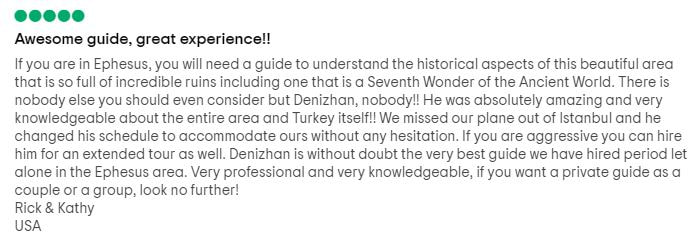
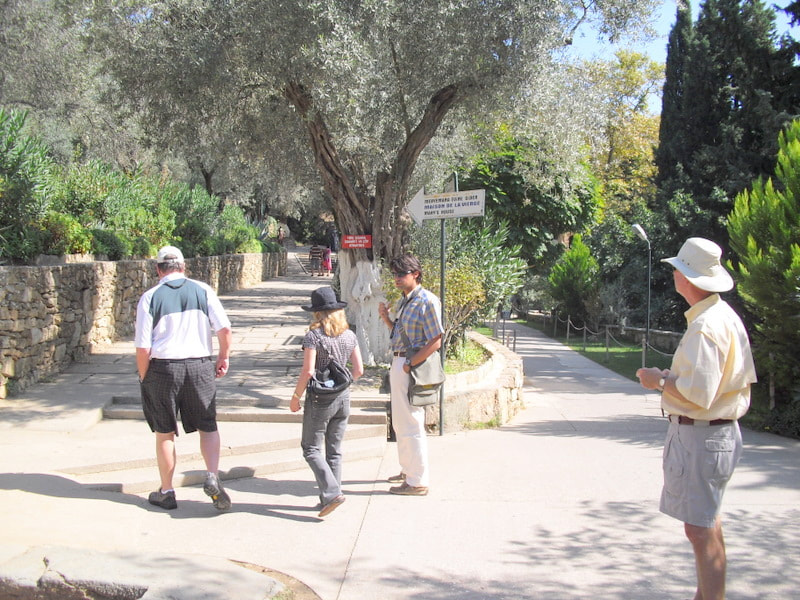



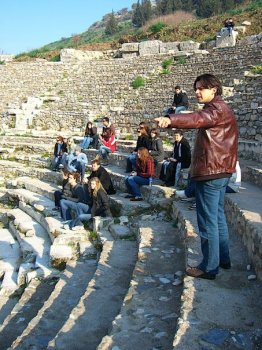
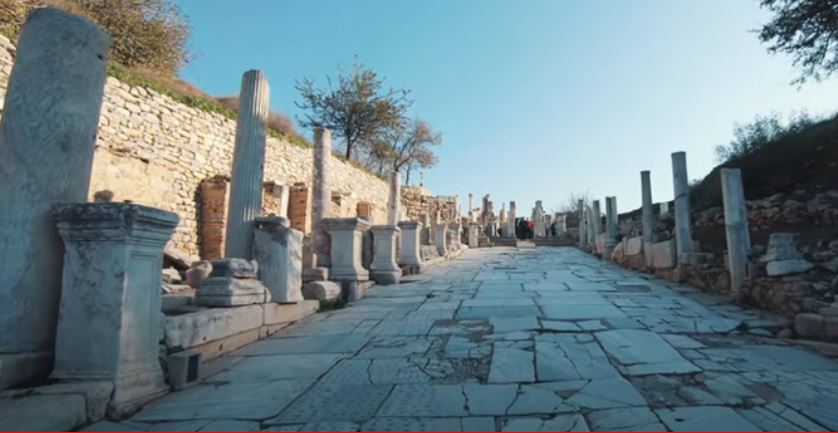

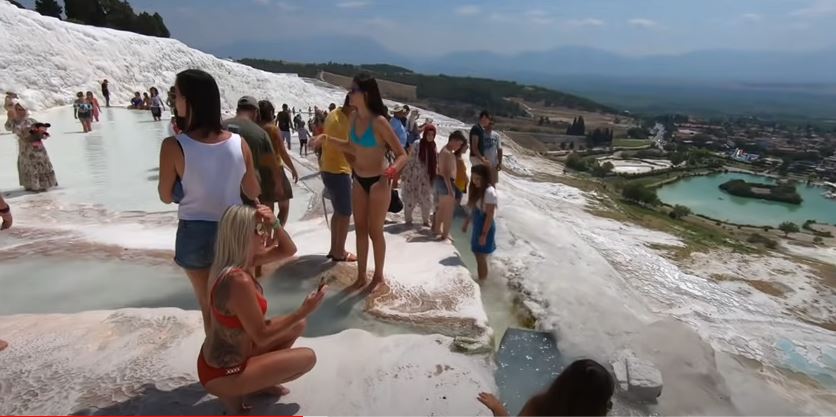
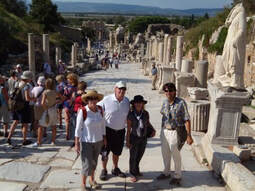
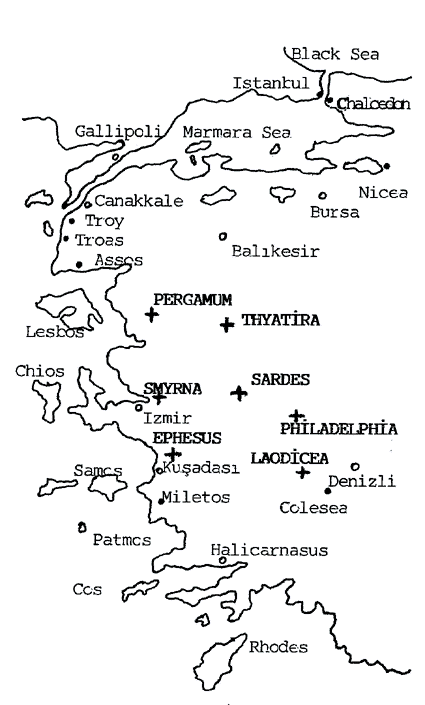
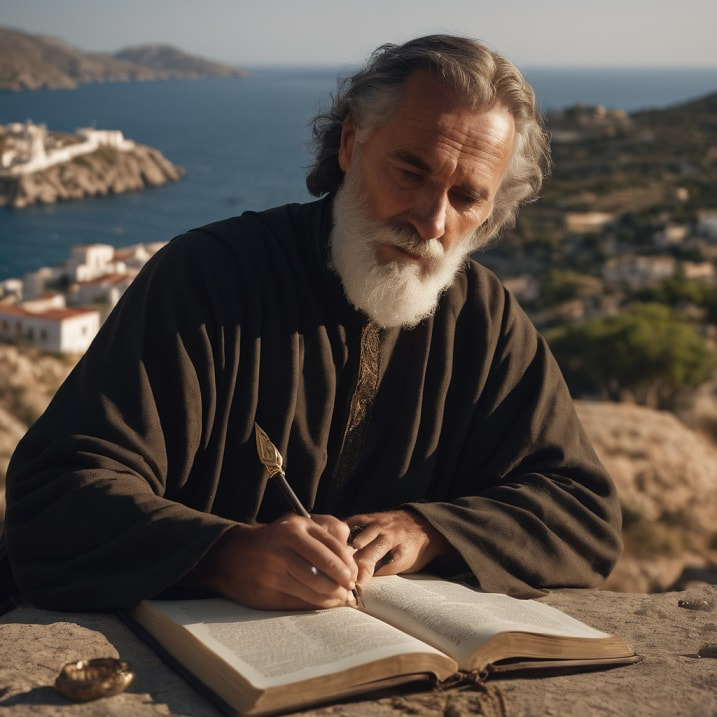

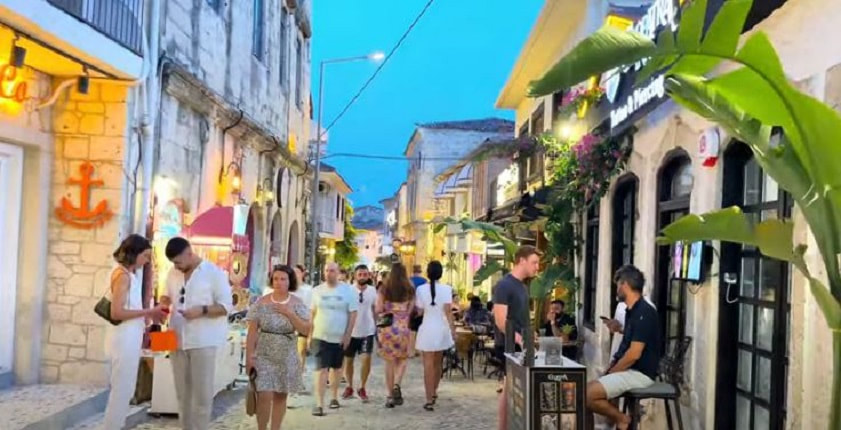
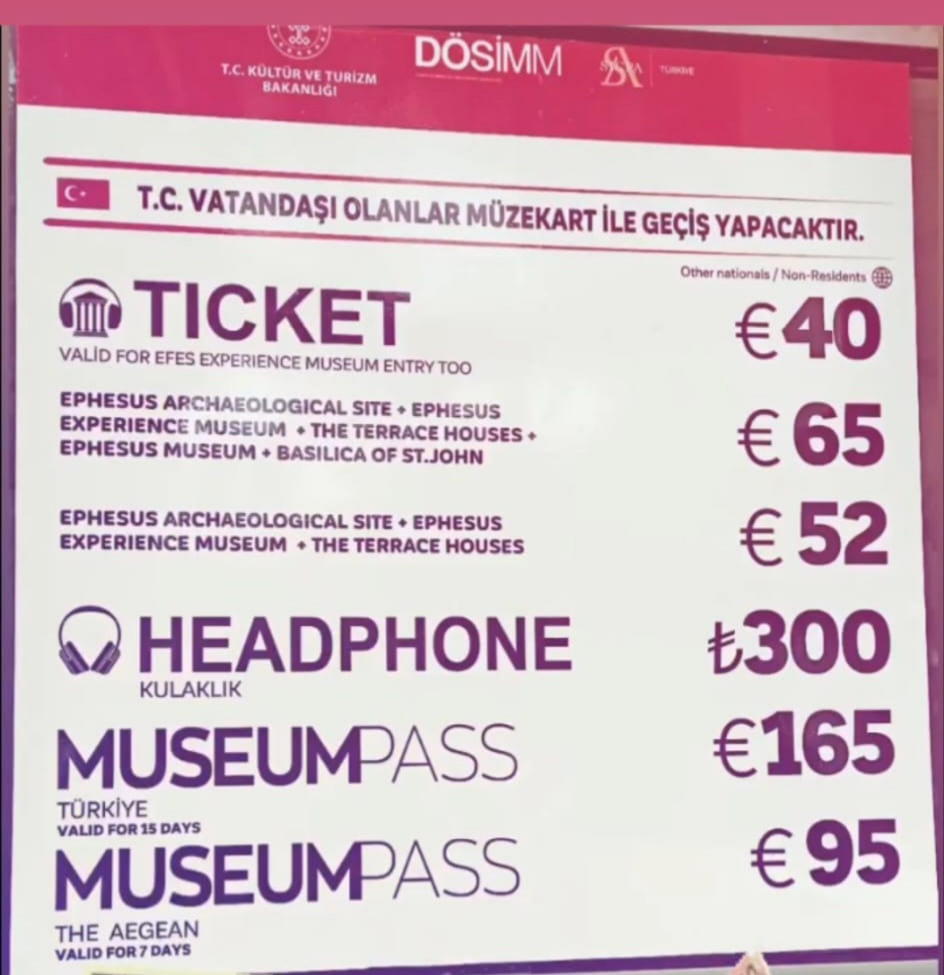
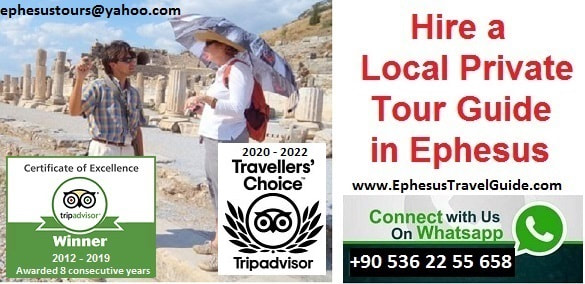

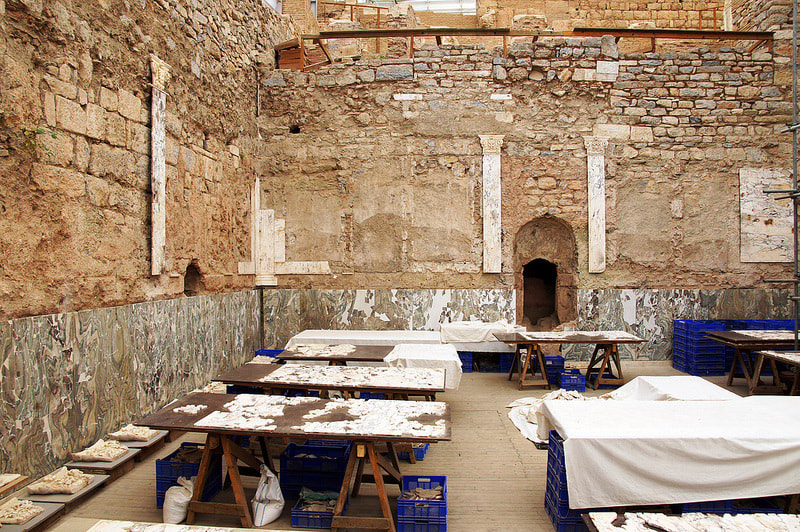
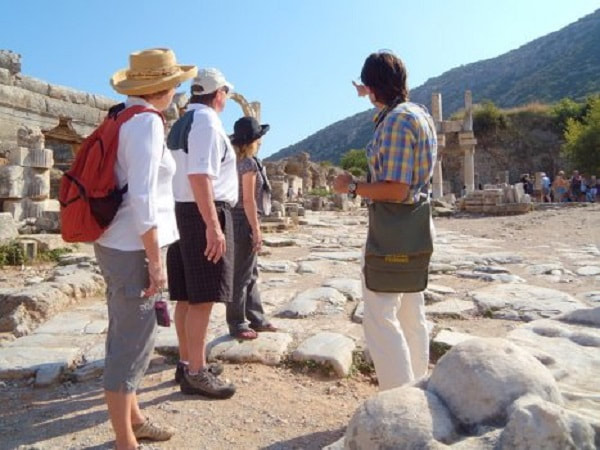



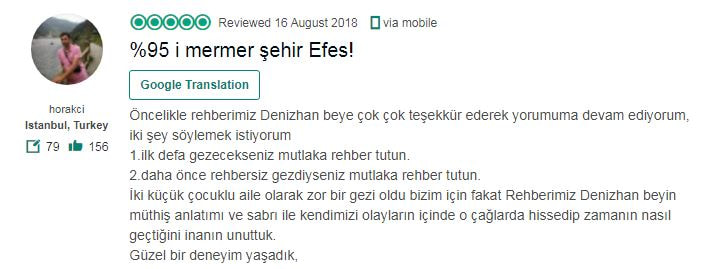
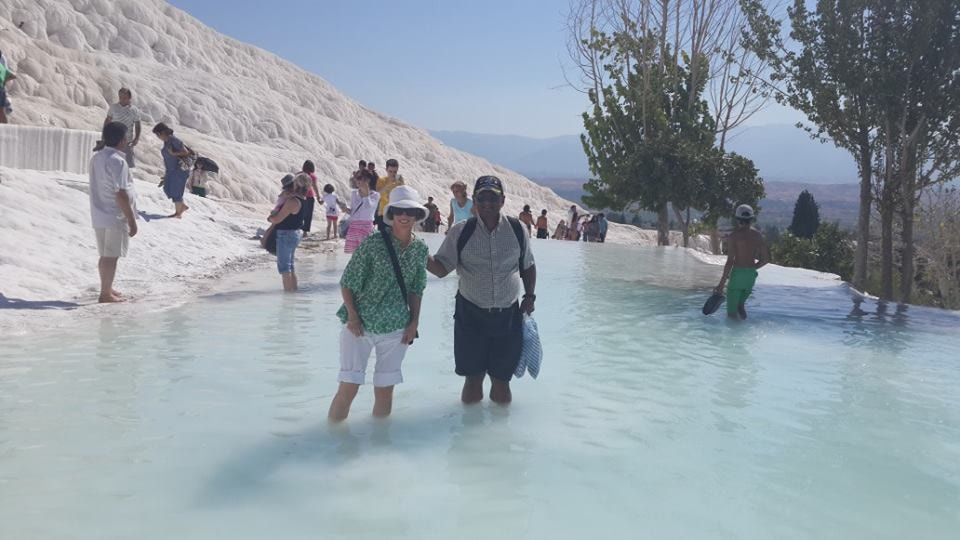

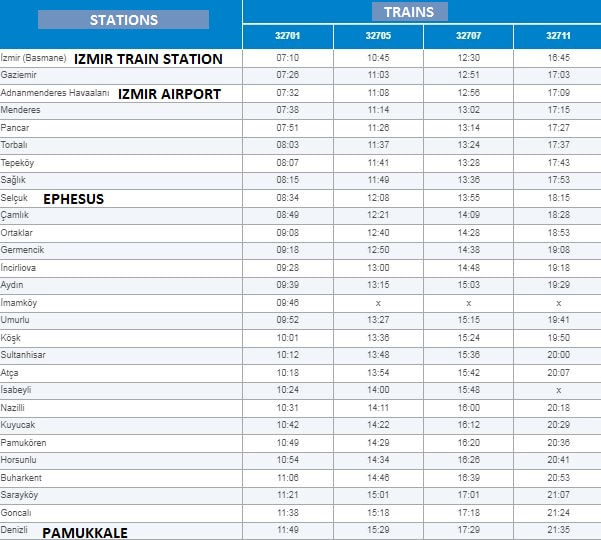
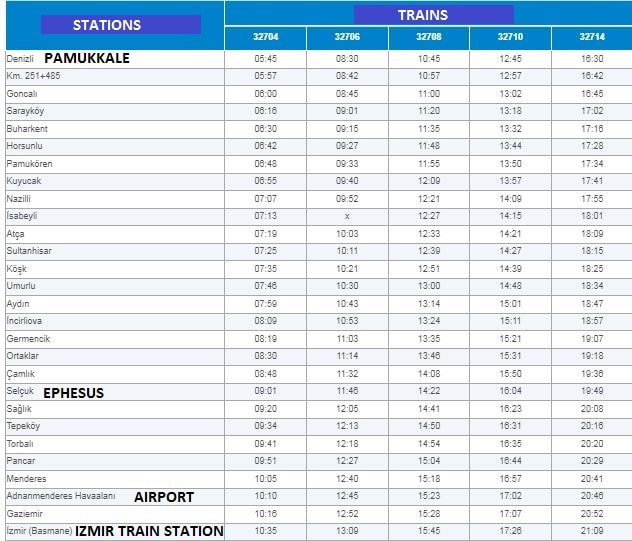
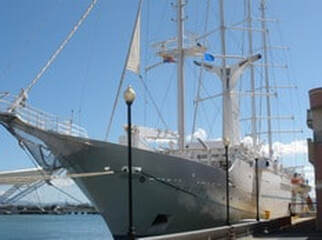
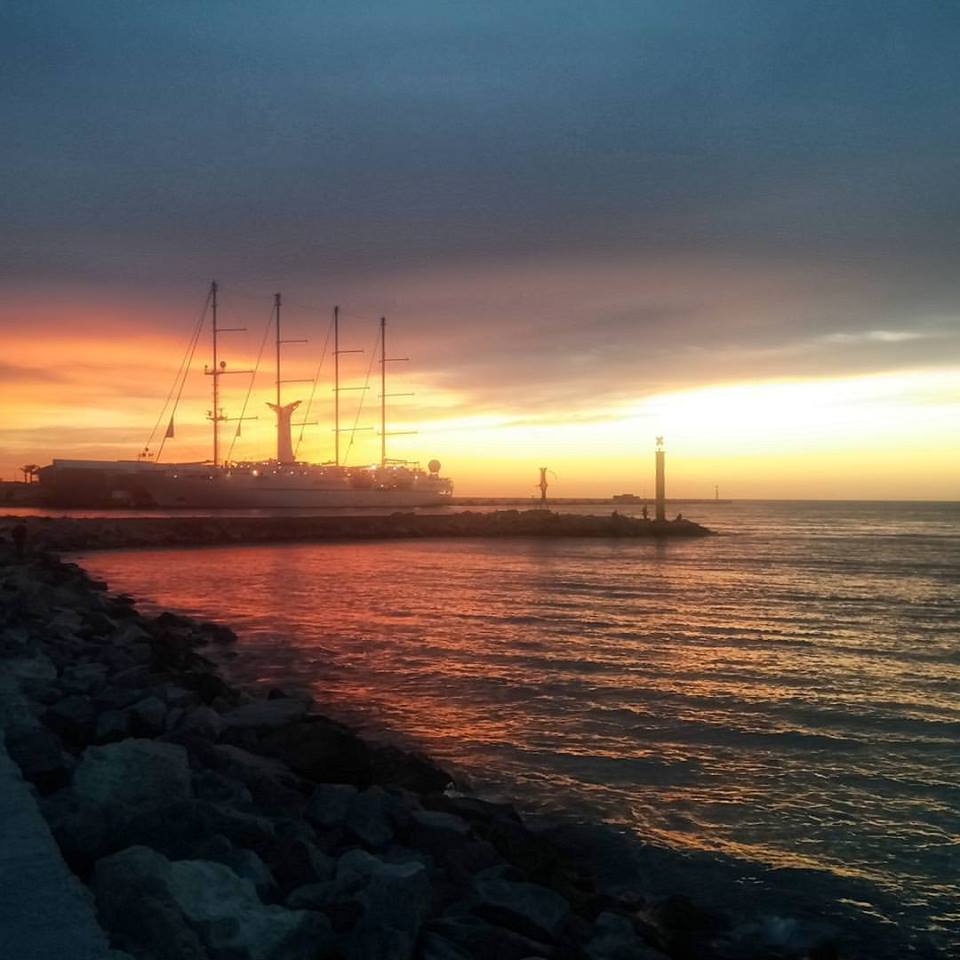


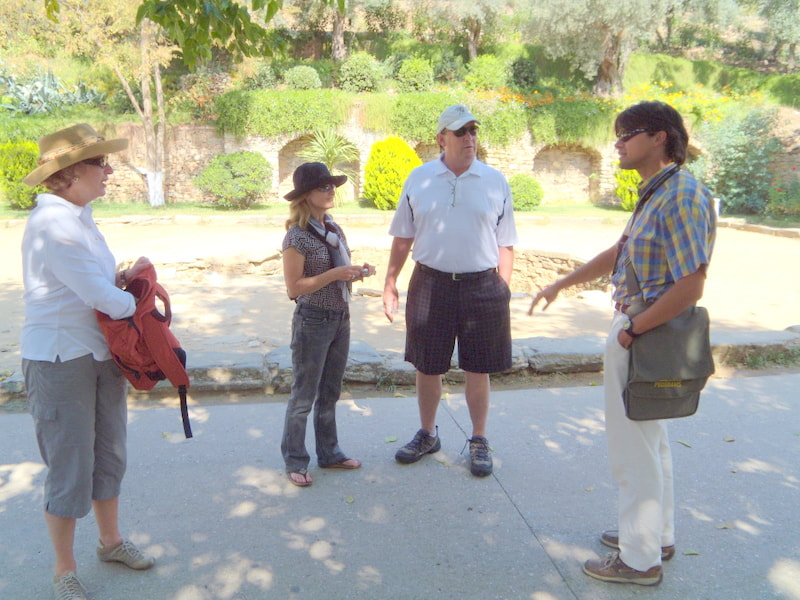



 RSS Feed
RSS Feed
